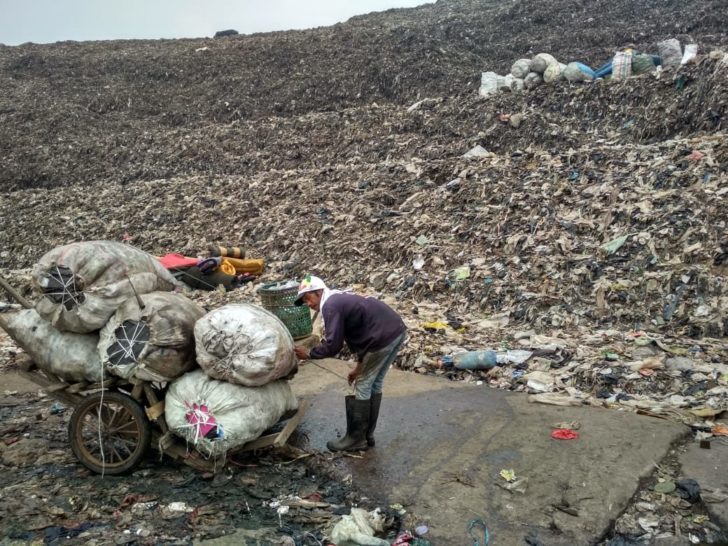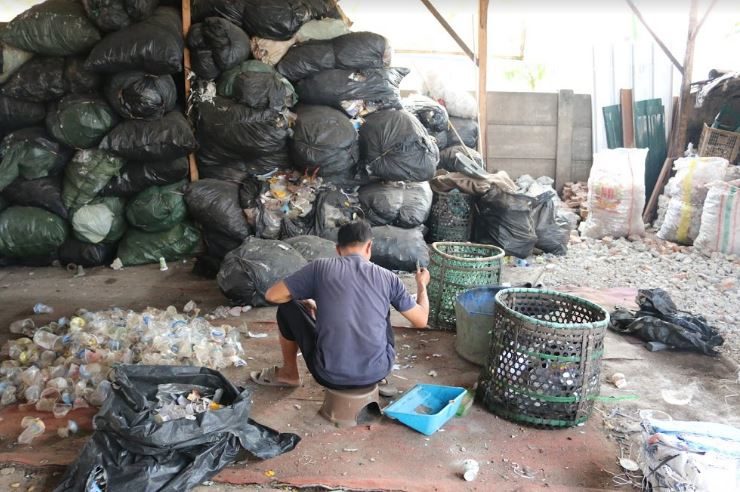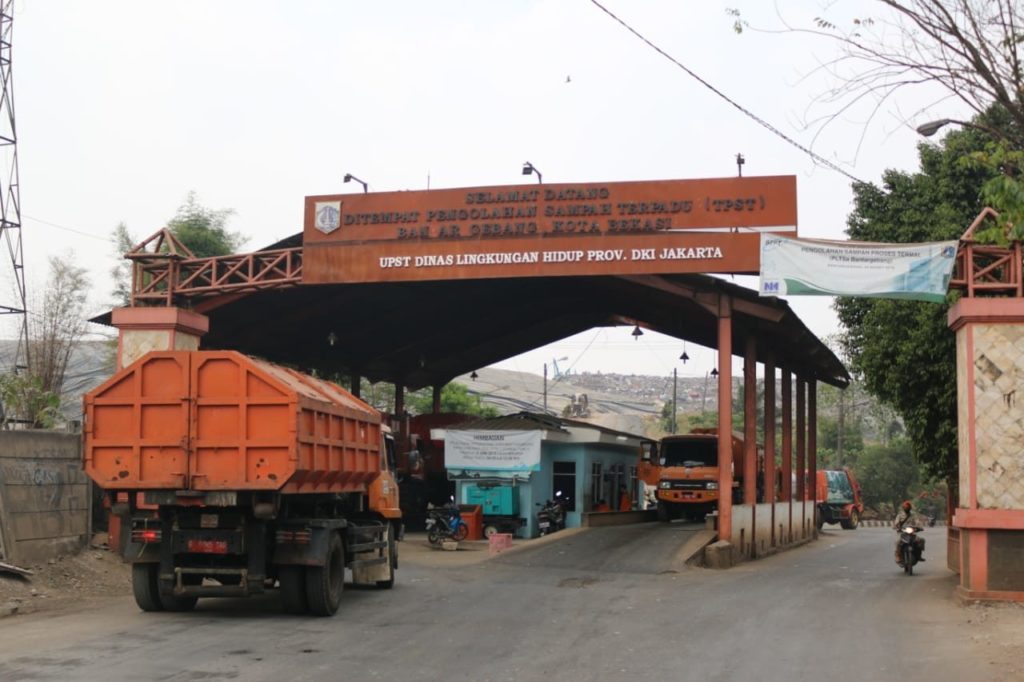

A vast, 120-hectare moonscape of toxic, foul-smelling and suppurating waste; this huge dump (the largest uncovered landfill in Southeast Asia) serves the 32 million-strong Jakarta conurbation. Estimated to contain over 39 million tons of garbage, (7000 tons are being added daily) it should reach its full capacity of 49 million tons by 2021—if not sooner.

Ibu Suki Sri, now 52-years old, started scavenging at the facility when it first opened thirty years ago. Back then, the rubbish was deposited in a series of craters left behind by quarrying activity. Three decades on, Bantar Gebang – at least from a distance – is more like a range of hills: ten small hills to be exact.
Ibu Sri no longer combs through the trash herself. She has become a collector, managing a team of scavengers who in turn hunt for plastic bottles, straws, medical plastic containers (low density polyethylene/HDPE plastic), shoes, aluminium, metal and tin. Once sorted, graded and cleaned, the trash has some economic value: a sack of plastic bottles can be sold for IDR5000 per kg, HDPE’s fetch IDR7000 per kg.

Still, Ibu Sri is unsentimental about the prospect of it having to close by 2021, noting that: “I don’t think Bantar Gebang will be closed anytime soon. But if it does, I’ll just move to another dumpsite. Wherever the trash goes, I’ll follow.”
There are Bantar Gebang‘s all over Southeast Asia, from Tondo in Metro Manila to Da Phuoc in Ho Chi Minh City, and they are testimony to a fundamental flaw of the economic growth and prosperity narrative that we have all accepted as the gospel truth.
In short: we have been sold a lie because the unfettered consumerism and consumption that underpins our lives is unsustainable.
Every tube of toothpaste, shampoo bottle, yoghurt cartoon, confectionary wrapper and flimsy pink plastic shopping bag ends up in somewhere like Bantar Gebang, Tondo or worse, is still floating somewhere on the open seas off our shores.

The desperate lie at the heart of our current economic model was made all the more glaring when, just over eighteen months ago, on 31 December 2017, Chinese authorities decided to ban the import of waste materials.
Dubbed the “National Sword” policy, they dealt a near-fatal body-blow to the USD200 billion strong global recycling industry: the consequences of which are still being felt across Southeast Asia, Europe and North America.
Basically, an entire “”do-gooder”” ecosystem of recycling bins, depots and incinerators has evolved to allow Western consumers to think that they can continue their profligate ways without harming the environment.
Well this is nonsense. In fact, it is rubbish.
The ecosystem was only workable as long as the Chinese were willing to import the detritus of Western consumerism: from hazardous waste to plastics and e-waste.
When the Chinese realised, albeit belatedly, the impact of the presence of millions of tons of waste on their own environment, they changed their minds and the entire edifice collapsed.
The biggest loser has been the Western idea – now revealed as little more than a fraud – that recycling of all this waste is even possible.
We now know that recycling isn’t cost-free. Nor is it an environmental good.
As Southeast Asia drowns in thousands of tonnes of hazardous waste – most of which comes from the smug and hypocritical nations of the global north, the recriminations on both sides have been bitter.

Earlier this month, Indonesia has decided to ship back 49 containers of contaminated waste to the United States, Australia, France, Germany and Hong Kong.
Malaysia, in May, shipped back 3,000 tons of plastic to 14 origin countries. Meanwhile, the Philippines returned 69 containers to Canada, accompanied by the usual anti-Western bluster of President Rodrigo Duterte.
The fact is that Southeast Asian countries can barely manage their own garbage, much less handle the West’s.
Back in Jakarta, there are plans to create a USD250 million intermediate treatment facility (ITF) zone by 2022 that can store 2,200 tons of waste to replace Bantar Gerbang.
But that will probably not be enough given that the city, as noted, produces 7000 tons a day.
And even if more landfills could be created—it doesn’t solve the fundamental issue of what the people of Jakarta—indeed, of Southeast Asia and the world—are eventually going to do with all the garbage 21st Century living and consumerism produces.
Calls for both manufacturers and individuals to change their practices or habits can only go so far.
They only sweep the problem under the carpet—or in Bantar Gerbang’s case—pile it even higher.
Technology—and global integration—have clearly failed us in these counts.
Exporting your trash as the Europeans and Americans have been doing (albeit surreptitiously) is hypocritical and self-defeating.
All societies need to face up to the impossibility of ever managing the mountain of trash that our Fast Moving Consumer Industries (FMCG) are generating. What is required is a total overhaul of the sale and distribution of FMCG. Waste management will only be short-term and temporary if we don’t reeducate consumers, producers and retailers. Anything in between will fail. Until then the Bantar Gebang’s of Southeast Asia will continue to mushroom and grow.









